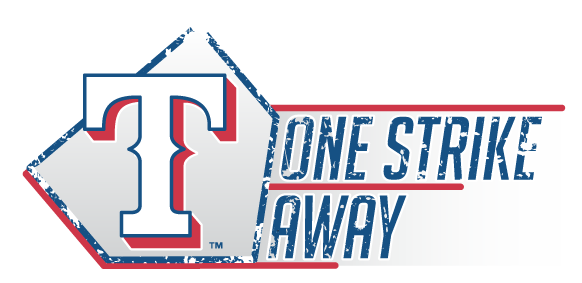Limiting a Freefall
/As we sit here this morning, the Rangers find themselves in a freefall. They’ve won four games in the month of July. And if we’re being honest, things started before that on June 29, as the Rangers blew a 4-run ninth inning lead and lost 9-7 in New York against the Yankees, then lost again on June 30.
For awhile, it was easy to simply blame the schedule-makers for every woe. 37 games in 38 days is about as brutal a stretch that any team can go through, and add onto that that from June 27 to July 24, the Rangers will have played but four games at home. So, sure, it’s certainly a factor. Fatigue is real, and baseball players are human, too.
Despite that, another force has been at work: Regression. For much of the season, I’ve been bombarded with all sorts of vitriol regarding my stance on this team. The record was great, but there were glaring holes. While it’s easy to revel in wins and forget all else, I was concerned about what would happen when Texas began struggling the way their run differential said they should. When things with RISP began to get worse.
So as we sit here on July 21, that’s a factor as well. It’s not often that a team goes into 2013 St. Louis Cardinals mode and outperforms their projections and talent for an entire season.
But no, I’m not here to predict doom and gloom for the rest of eternity. That isn’t to take away from how bad things have been, but a fair number of projection systems are based on assumptions. For example, a ZiPS projection that had Prince Fielder worth 1.4 WAR rather than the -1.8 he’s put up couldn’t have known that his surgically repaired neck would rear its ugly head once again.
And as bad as it makes me feel saying it – I don’t wish injury on anyone – Prince Fielder being out of the lineup for the remainder of 2016 serves to help the Rangers down the stretch. He’s been, effectively, one of their biggest problems, even when the team was winning at such a torrid pace.
The bullpen, long seen as the biggest trouble spot, should be fine. There are now six relievers in the bullpen that I feel mostly comfortable giving the ball to once Jake Diekman returns, and that’s before considering that Tanner Scheppers could, in theory, end up providing some value himself by the end of this thing.
And that’s probably a good thing. A bullpen is only as good as the starting pitching in front of it, and the rotation has been the biggest concern. Beyond that, this current stretch all but ensures that any team looking to deal with the Rangers has the leverage to ask for the moon in regards to any assets they might trade. Effectively, that would seem to place Texas in a spot to only be looking at upper-tier talent for the starting rotation, and I’m OK with that.
The beauty of run differential to predict a team’s true talent level is that it is merely a snapshot in time. For example, seeing a +2 run differential today says that perhaps the Rangers should be closer to .500 than the best record in baseball. However, that figure doesn’t add in the hope that comes from maybe, just maybe, having Yu Darvish back in the rotation for the long haul. Or getting meaningful plate appearances for Jurickson Profar and his wOBA of .341 as opposed to Prince Fielder and his wOBA of .276. Or having the starting rotation give up less than a July ERA of 8.25.
So while I’m not saying that this team will turn everything around and best baseball’s best into October, I am saying that things won’t continue to be this bad. They’ll be somewhere in the middle. And which middle-point they end up at will be determined over the next two-plus months.
And who knows? At this point next week, a big trade could shape the landscape of things, further adjusting that expected middle-point more toward the positive. Because that’s the good thing about baseball: Things can change and adjust even a computer’s expectations accordingly.

